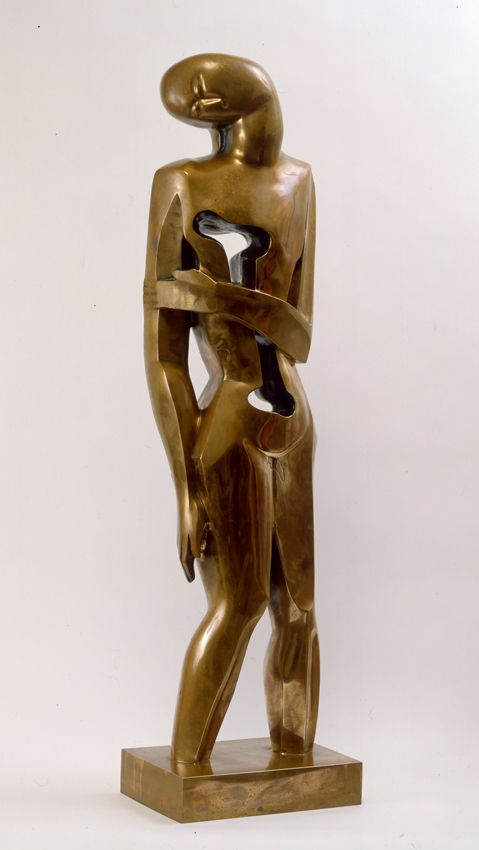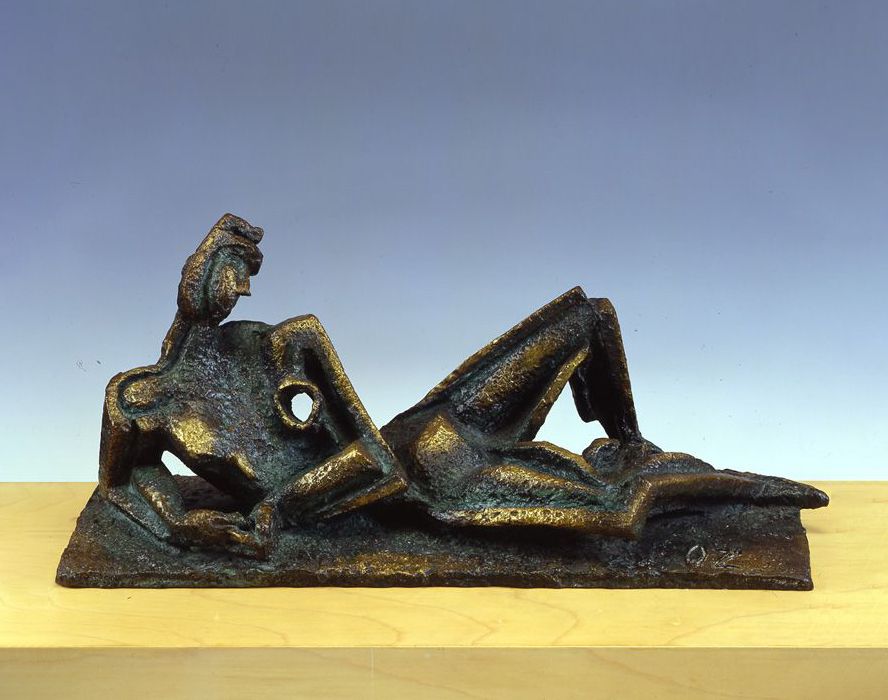Biography
Throughout his career, Zadkine remained faithful to direct carving, preferring stone for its ability to express the rigor and harmony he sought in his art. He managed to merge a classical aesthetic of structure with a freedom of expression inspired by the Baroque, combining order and fantasy.
Ossip Zadkine (1890-1967) was a Russian artist who, at the age of 16, was sent to England by his family to learn "good manners". It was there that he discovered his passion for sculpture while attending evening classes at the Arts School. Determined to devote himself to this art, he left London to continue his apprenticeship and attended the Arts and Crafts School. During this period, he became friends with the collections of the British Museum, a constant source of inspiration. In 1909, he arrived in Paris and enrolled at the École des Beaux-Arts, in the studio of Antoine Injalbert. However, he quickly rejected the academic teaching methods and became closer to the work of Rodin, of whom he became a fervent admirer. In 1911, he rented his own studio and began to make a name for himself. It was also at this time that he met several leading figures of modern art, such as Guillaume Apollinaire, Blaise Cendrars, Archipenko, Lipchitz, Picasso and Survage. In 1912, his encounter with African art led him to reinvent his practice of sculpture, bringing a new approach to the management of volumes, full and hollow forms, curves and counter-curves. In 1914, he joined Cubism while adapting it to his own research. From 1921 to 1925, Zadkine, with the help of Brancusi and Archipenko, explored a more sensitive approach to this movement, thus influencing his artistic production through various techniques, including etching, watercolor and gouache.
Throughout his career, Zadkine remained faithful to direct carving, preferring stone for its ability to express the rigor and harmony he sought in his art. He managed to merge a classical aesthetic of structure with a freedom of expression inspired by the Baroque, combining order and fantasy. From 1925, his sculpture evolved towards a form of experimentation where reliefs were replaced by hollows and curves by right angles, thus reversing the relationship between light and shadow. He freed the forms, giving them a feeling of floating, before moving, after the war, towards a more expressive sculpture, charged with intense, even violent emotions. He taught at the Académie de la Grande-Chaumière and in his own studio, training generations of artists from all over the world. From 1910, he participated in numerous group exhibitions, in France and internationally. His first solo exhibition in Paris was held in 1920, and over the years his work was awarded numerous prizes, including the Grand Prix for sculpture at the Venice Biennale in 1950 and the Prix de la Ville de Paris in 1960.


